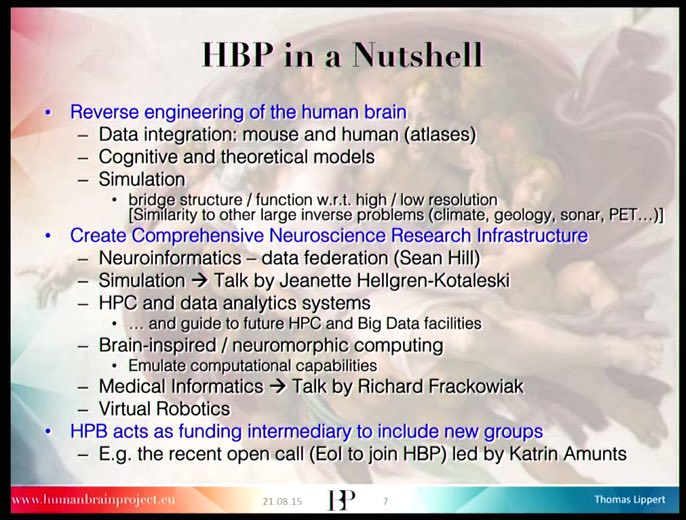In this video from the Neuroinformatics 2015 Conference, Thomas Lippert from Jülich presents: Why Does the Human Brain Project Need HPC and Data Analytics Infrastructures? HBP, the human brain project, is one of two European flagship projects foreseen to run for 10 years. The HBP aims at creating an open neuroscience driven infrastructure for simulation and big data aided modeling and research with a credible user program.
“The goal of the HBP is to progressively understand structure and functionality of the human brain, strongly based on a reverse engineering philosophy. In addition, it aims at advancements in digital computing by means of brain inspired algorithms with the potential to create completely novel analogue computing technology called neuromorphic computing. The HBP simulation and data analytics infrastructure will be based on a federation of supercomputer and data centers contributing to specific requirements of neuroscience in a complementary manner. It will encompass a variety of simulation services and data analytics services ranging from the molecular level towards synaptic and neuronal levels up to cognitive and robotic models. The major challenge is that HBP research will require exascale capabilities for computing, data integration and data analytics. Mastering these challenges amounts to a huge interdisciplinary software and hardware co-design effort including neuroscientists, physicists, mathematicians, and computer scientists on an international scale.”
“The HBP is a long-term endeavor and thus puts large emphasis on educational and training aspects. The maturity of a service is critical, and it is important to differentiate between an early prototype, the development phase, and the delivery of services, in order to assess capability levels.”
The services and infrastructures of the HBP will successively include more European partners, in particular PRACE sites and EUDAT data services, and will be made available step by step to the neuroscience and computer science community.




